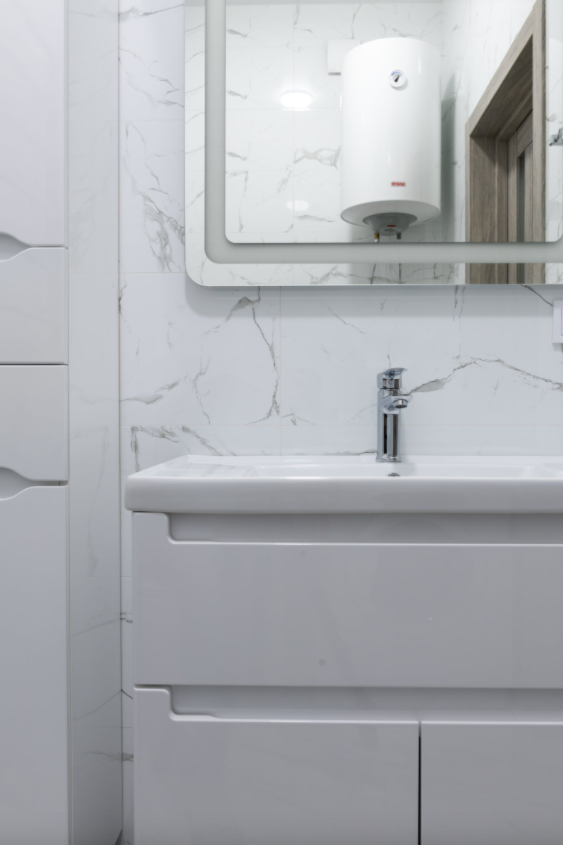Photo By: Pexels
Like any other appliance in your home, the water heaters and their tanks may break down at some point and will need a replacement. Nobody wants to take icy showers in the morning and wash their faces in freezing tap water. Ideally, you should replace your tanks and appliances before they completely stop working.
If you’re going to wait until winter, this could mean more problems for you in the future. This will be a much larger problem like leaks and further damage in the tanks. One way to know that it’s time for a water tank replacement is to consult the experts. They will inspect your unit, make sure that everything is working fine, and alert you if they see issues that could lead to expensive repairs in the future. They will also advise you if it’s time to change your appliance and get a new and more efficient one.
Age of your Appliance
The first telltale sign that you should watch out for is when you have an appliance that’s too old. The heater will be more likely to break down in the coming winter months, and you should seriously consider buying a new one to continue getting warm showers. If you have a tank that’s 7 to 12 years or it’s nearing its 10-year mark, it’s a good time to do replacements for the unit. Some may even upgrade to tankless models.
With the proper maintenance and luck, you may even double the lifespan of your appliance. But sometimes, even with the best care, you still need to replace your heaters after just a few years. Add filters whenever necessary to prevent limescale build-up. If you don’t have one installed, it’s best if you could get a new heater, especially if it’s broken down a few times in the past years already.
Signs of Corrosion and Rust
The second clue is when you see excessive rust and corrosion in the water. Most of these tanks are usually made up of steel, and they will develop rust eventually. In serious cases, you may even notice this whenever you turn on the taps.
Rust and signs of corrosion are evident in the pressure relief valves, water outlets and inlet connections, and other places. They are indicators that everything is starting to rust inside, and you need to replace them as soon as possible.
Unfortunately, some tanks are very challenging to repair, especially when they start to rust. If the heater does not have any leaks yet, it might be only a matter of time before the rust develops. The area where your appliance is located can play a huge role in the following steps that you’re taking. If the heater is located inside your basement, you need to be proactive in replacing the tank when there’s leaking water because it can cause damage to the foundation of your house.
Water damage will be minimal when the water hits the soil or solid cement, and everything can be cleaned up efficiently. However, if the tank is located outside in a garage, you may want to wait until the unit begins to leak. Another thing that most homeowners do is install water sensor alarms. This way, they will immediately be alerted when leaks are present.
Drain Valves Don’t Do their Jobs Properly
The primary role of these valves is to drain water, and you know that it’s time for replacement when the valves no longer drain the water in the tanks. When this happens, the sediments will settle at the bottom and begin to build up inside the water heater. If you have the gas variety, you may notice some popping sounds whenever you ignite the burner. This is one of the indications of sediment build-up.
Know that regardless of the source of fuel, sediment build-up is still a problem that needs immediate action. This applies to gas and electric water heaters because it will clog the drains and the valves over time if the sediment accumulates. The interior begins to disintegrate, and you’ll find yourself with cold showers in the winter seasons.
Flushing may help, but it’s best if you could find a replacement as soon as possible. This way, the new tank will be free of sediments, and you’re sure that it won’t break down on you. The new ones won’t have to undergo regular flushing, and they won’t cause any serious problems, so that’s fewer headaches for you.
In serious cases, sediments can cause leaks, especially when they are agitated from the bottom during the draining process. It’s best to call professional plumbers to assist you with the installation or drainage, whichever is applicable.
There’s also the possibility that the drains are no longer working. When the point is reached when drainage is no longer possible, it’s best if you can get a replacement. Read more about appliances on this site here.
Leaks
Another clue is when you see your appliance leaking. Internal problems cause leaks, and you can rarely repair them. If you find that the tank itself is leaking, it’s best if you could do a replacement of your water heater.
To prevent further water damage, you need to turn off the electrical power and the water heater itself. Afterward, get help from professional plumbers so they can install the unit. If you’re thinking about going to the DIY route, you may create more problems than you can solve, especially if you don’t have the tools to help you.
Cold or Lukewarm Water
One of the final clues that will tell you that it’s time for a replacement is when you start getting many lukewarm or cold showers. There’s clearly something wrong with this as you’re beginning to notice that your baths are not as hot as they once were, or you’re freezing every time you take a bath.
It may be a problem of a thermostat malfunction or your heating elements. It’s not uncommon for these parts to fail at some point. However, after you’ve done repairs on them and they still give you the same problems, you know that it’s time for a replacement.





